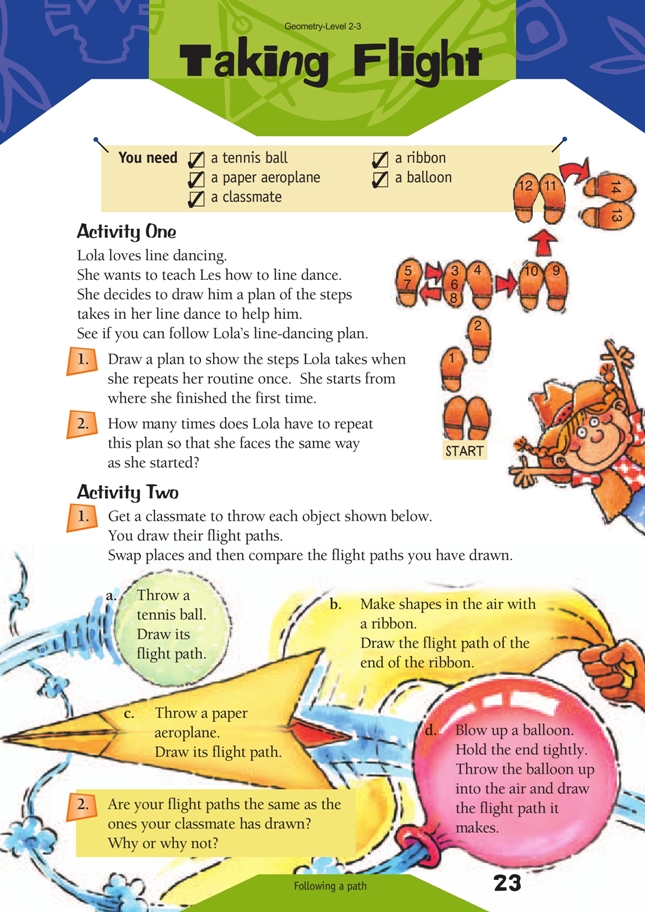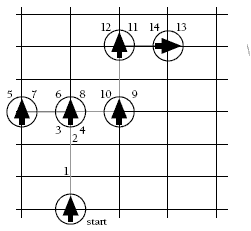This is a Level 2 Geometry activity from the Figure It Out Series.
A PDF of the student activity is included.
Click on the image to enlarge it. Click again to close. Download PDF (236 KB)
describe pathways of travelling objects.
A ribbon
FIO, Level 2-3, Geometry, Taking Flight, page 23
A paper areoplane
A balloon
A classmate
Activity One
Students need to realise that the numbers beside the footprints represent the position of each successive step as it is taken. They may want to act out Lola’s dance. The dance starts with the left foot moving off and involves the left foot tapping out to the side twice for steps 5–8 before the right foot leads off to the right at step 9. This move may confuse some students.
Using a grid to mark the distance and direction of Lola from her starting position (origin) may be useful.
The effect of Lola’s routine is to move her four steps up and four steps to her right together with a quarter-turn clockwise. Four repetitions of the routine will bring her back to the start and have her facing in the original direction.
An interesting question to ask students is: “Why might it be important to return to your starting place in dancing?” The limitations of dancing in confined spaces make this necessary, as does the need to be within earshot of the music.
Students may want to design their own dances that return them to their original starting position and direction.
Activity Two
The flight path of a tennis ball and the path of a water jet are parabolas, as discussed in the notes for pages 1 and 19. Both paper planes and frisbees are subject to air flows and to variations in their speed and angle of flight. Ask students to try to explain patterns in the flight path they see. For example, the graph below might describe the flight of a paper dart:
Ribbons can make many different patterns. Students can see some of the different patterns in rhythmic gymnastic displays from the Olympic or Commonwealth Games.
Students could try using other objects and comparing their flight paths with the objects suggested on this page. For example:
Answers to Activities
Activity One
1.
2. She does the routine four times in order to face
the same way as she started.
Activity Two
Answers will vary depending on the movement of the object.



